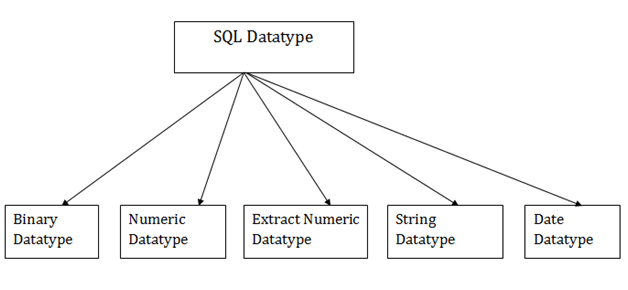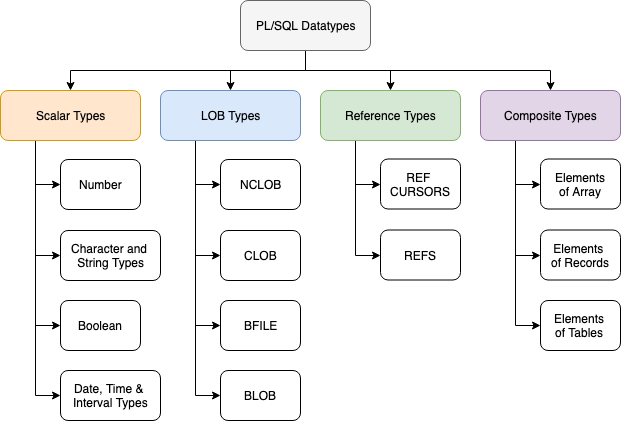

For example, PL/SQL predefines the subtypes CHARACTER and INTEGER as follows −You can define and use your own subtypes.
#Sql datatype for an icollections code#
The following program illustrates defining and using a user-defined subtype −Greetings := 'Welcome to the World of PL/SQL' When the above code is executed at the SQL prompt, it produces the following result −Hello Reader Welcome to the World of PL/SQLPL/SQL NULL values represent missing or unknown data and they are not an integer, a character, or any other specific data type. Valid dates range from JanuBC to DecemAD.The default date format is set by the Oracle initialization parameter NLS_DATE_FORMAT. For example, the default might be 'DD-MON-YY', which includes a two-digit number for the day of the month, an abbreviation of the month name, and the last two digits of the year. SQL DATA TYPE FOR AN ICOLLECTIONS CODE IN ANOTHERįor example, 01-OCT-12.Each DATE includes the century, year, month, day, hour, minute, and second.A NUMBER variable can also represent 0ANSI specific fixed-point type with maximum precision of 38 decimal digitsIBM specific fixed-point type with maximum precision of 38 decimal digitsFloating type with maximum precision of 38 decimal digitsANSI specific floating-point type with maximum precision of 126 binary digits (approximately 38 decimal digits)ANSI and IBM specific floating-point type with maximum precision of 126 binary digits (approximately 38 decimal digits)ANSI specific integer type with maximum precision of 38 decimal digitsANSI and IBM specific integer type with maximum precision of 38 decimal digitsFloating-point type with maximum precision of 63 binary digits (approximately 18 decimal digits)When the above code is compiled and executed, it produces the following result −Following is the detail of PL/SQL pre-defined character data types and their sub-types − S.NoFixed-length character string with maximum size of 32,767 bytesVariable-length character string with maximum size of 32,767 bytesVariable-length binary or byte string with maximum size of 32,767 bytes, not interpreted by PL/SQLFixed-length national character string with maximum size of 32,767 bytesVariable-length national character string with maximum size of 32,767 bytesVariable-length character string with maximum size of 32,760 bytesVariable-length binary or byte string with maximum size of 32,760 bytes, not interpreted by PL/SQLPhysical row identifier, the address of a row in an ordinary tableUniversal row identifier (physical, logical, or foreign row identifier)The BOOLEAN data type stores logical values that are used in logical operations.

The following statement creates a table with three columns.Pointers to large objects that are stored separately from other data items, such as text, graphic images, video clips, and sound waveforms.Rowcount is returned data type in pl sql area in another directory that shown in collection parameter declaration can declare pl sql varchar output host.Data items that have internal components that can be accessed individually.Built-in SQL functions (such as TO_CHAR) Therefore, Boolean values cannot be used in − The logical values are the Boolean values TRUE and FALSE and the value NULL.However, SQL has no data type equivalent to BOOLEAN.

For example, collections and records.PL/SQL Scalar Data Types and Subtypes come under the following categories − S.NoNumeric values on which arithmetic operations are performed.Alphanumeric values that represent single characters or strings of characters.Logical values on which logical operations are performed.PL/SQL provides subtypes of data types. For example, the data type NUMBER has a subtype called INTEGER. Sql Data Type For An Icollections Code In AnotherYou can use the subtypes in your PL/SQL program to make the data types compatible with data types in other programs while embedding the PL/SQL code in another program, such as a Java program. Numeric(p,s): Where p is a precision value s is a scale value. For example, numeric(7,3) is a number that has 4 digits before the decimal and 3 digits after the decimal.Defining Columns. A table in Oracle Database can have up to 1,000 columns. You define these when you create a table. You can also add them to existing tables. SQL supplies a set of basic data types that you can use for defining columns of tables. In this tutorial, we will cover the most commonly used SQL data types. The character string data type represents the character data type including fixed-length and varying-length character types. Fixed-length character data typeAny SQL type data, as well as user defined types, can be a collection item. For instance, an SQL primitive data type element is a scalar value.


 0 kommentar(er)
0 kommentar(er)
